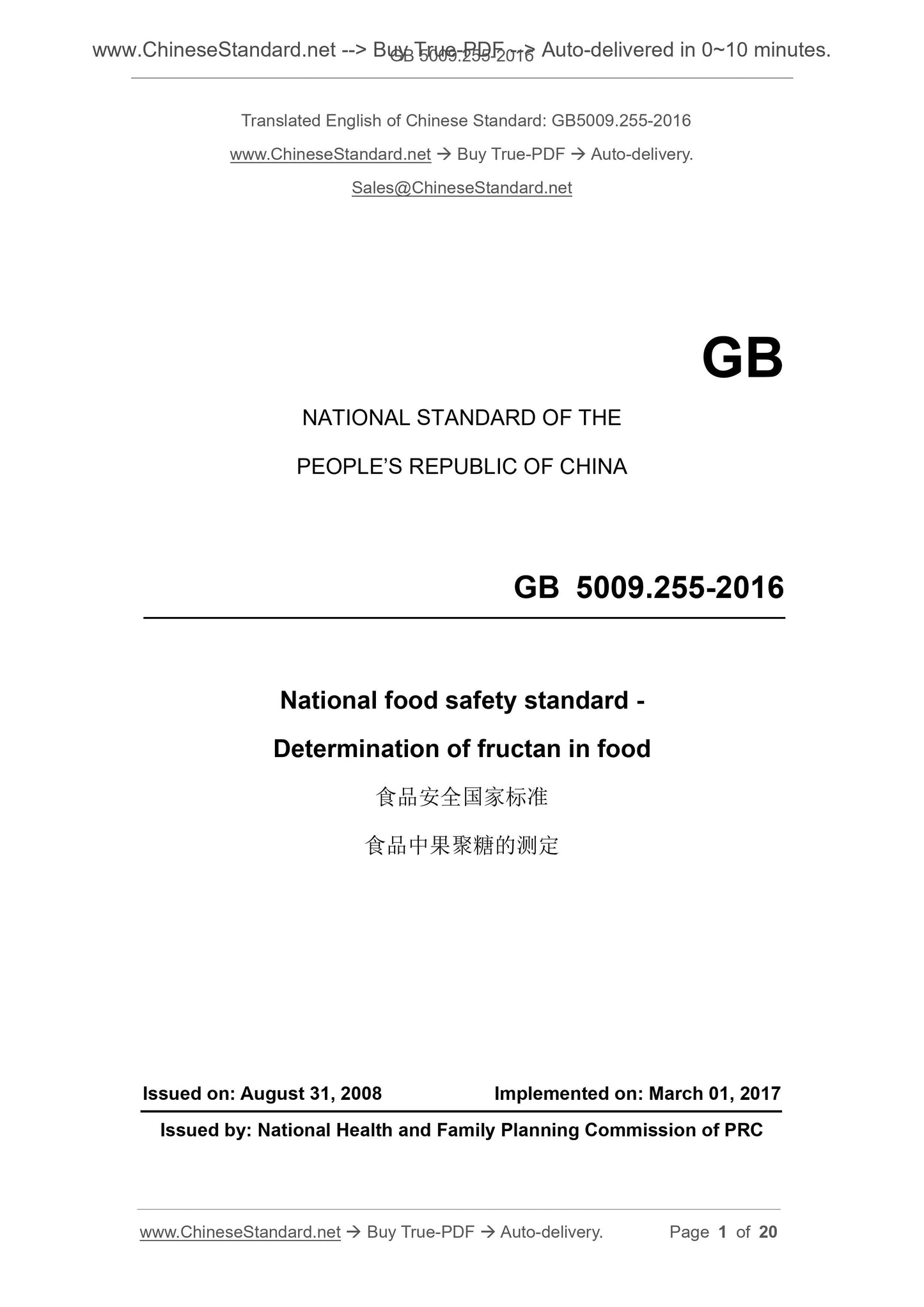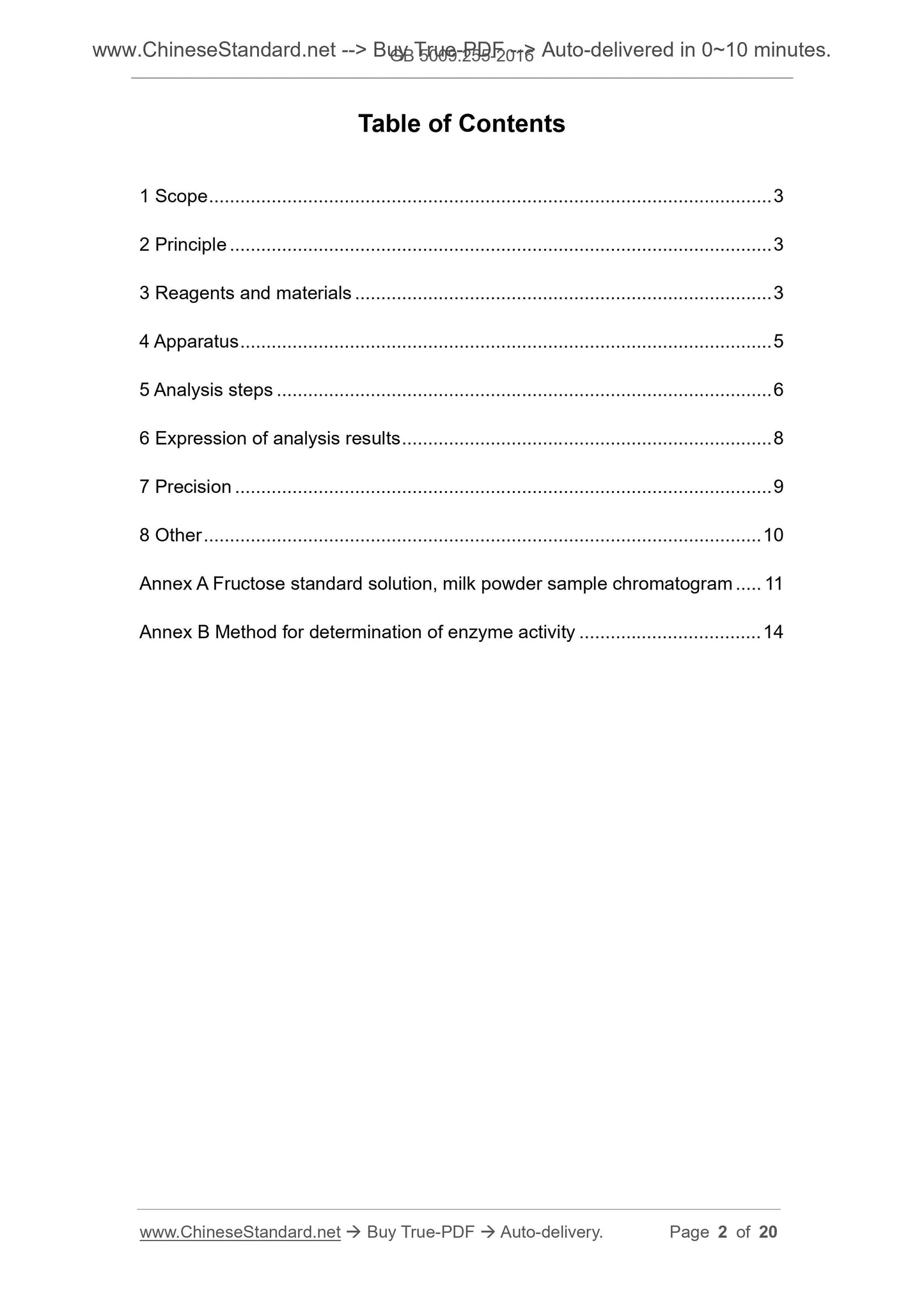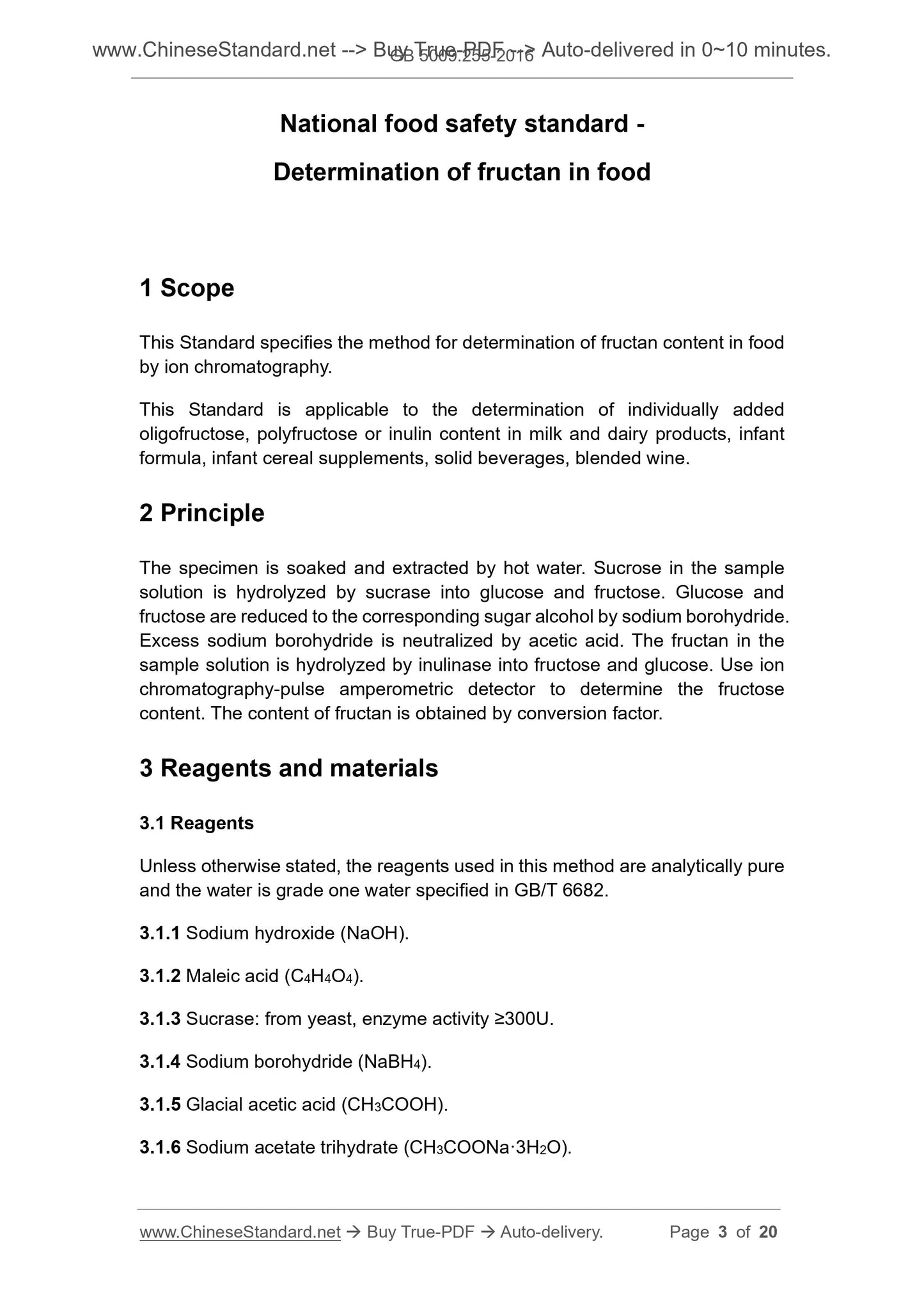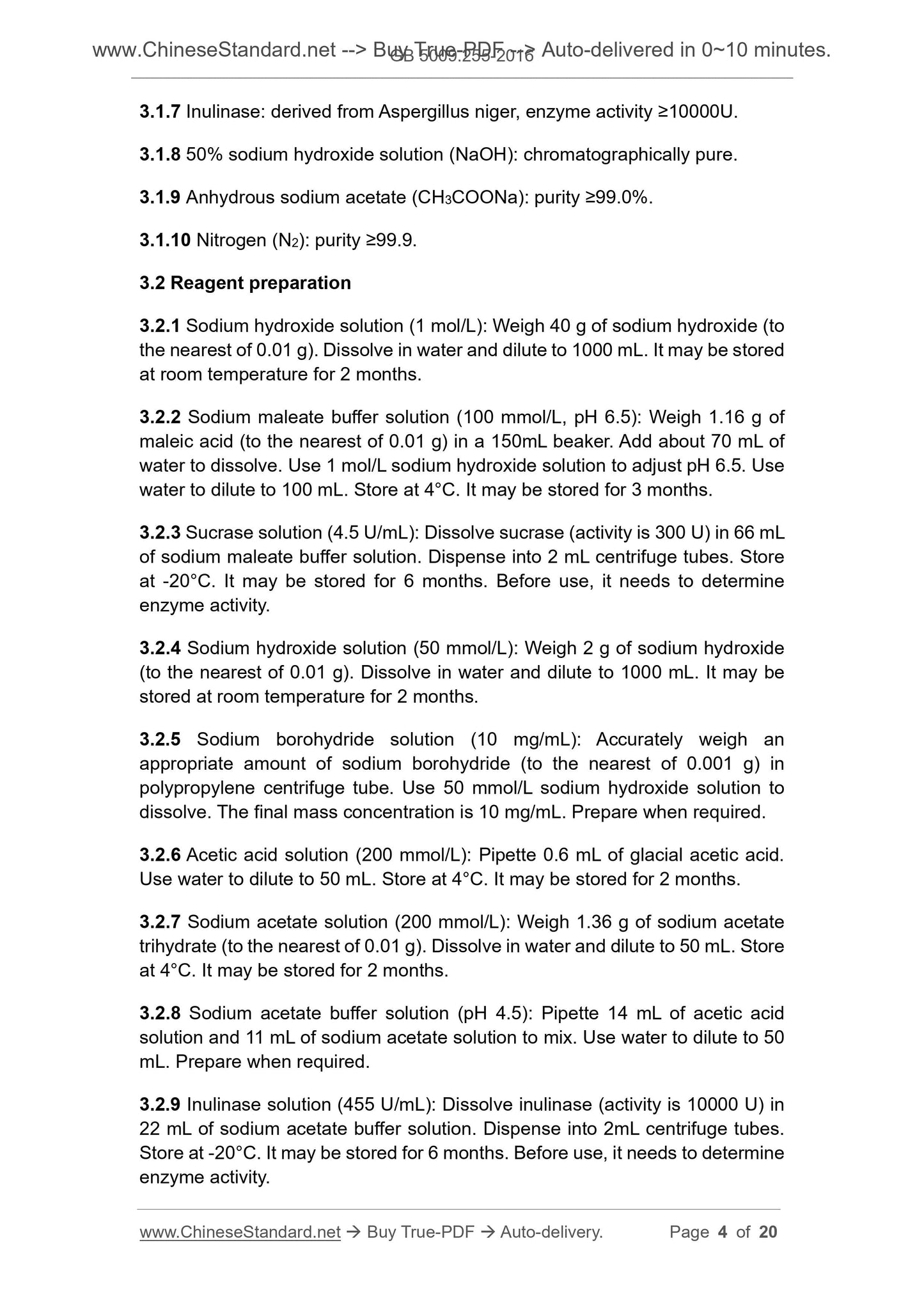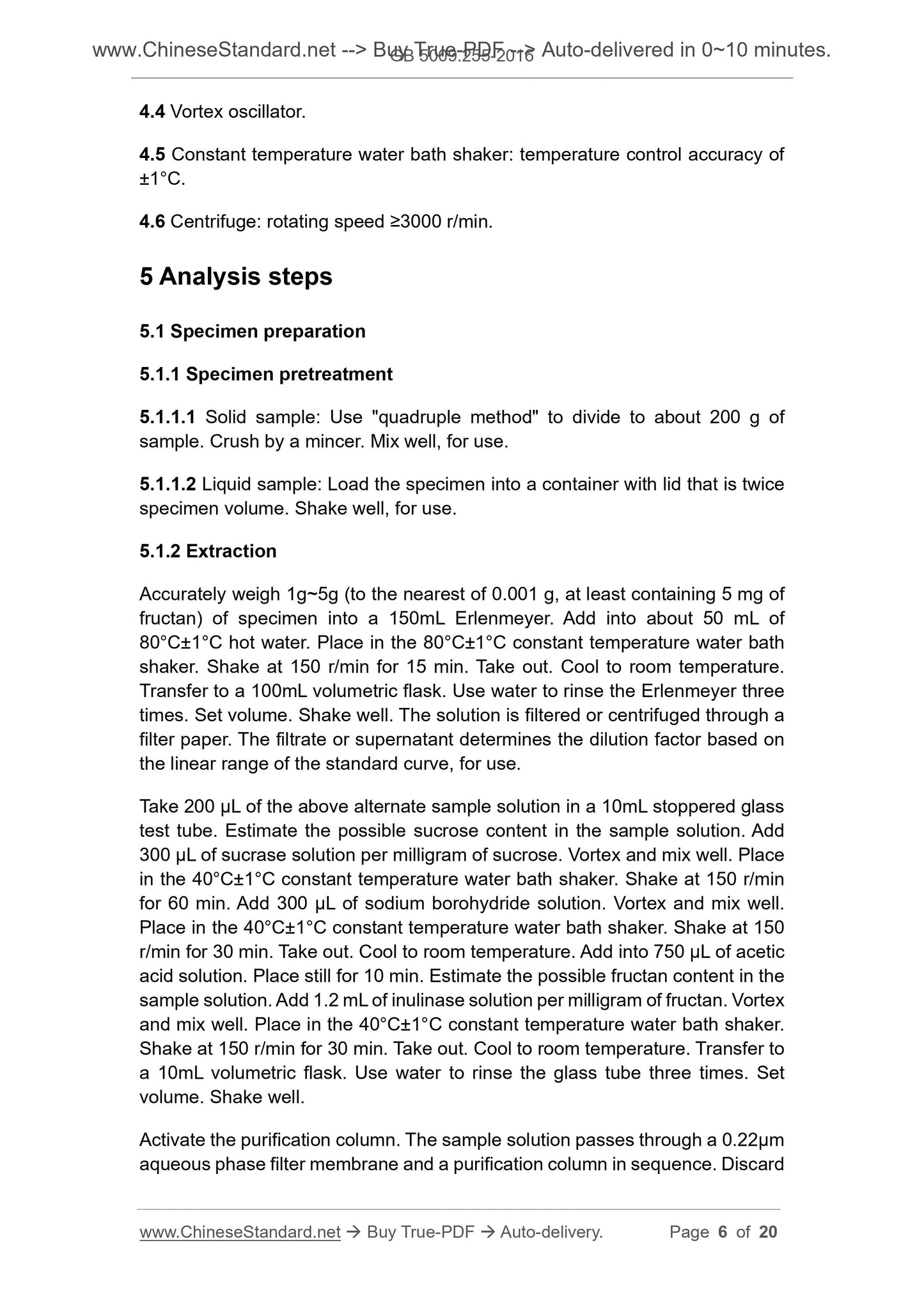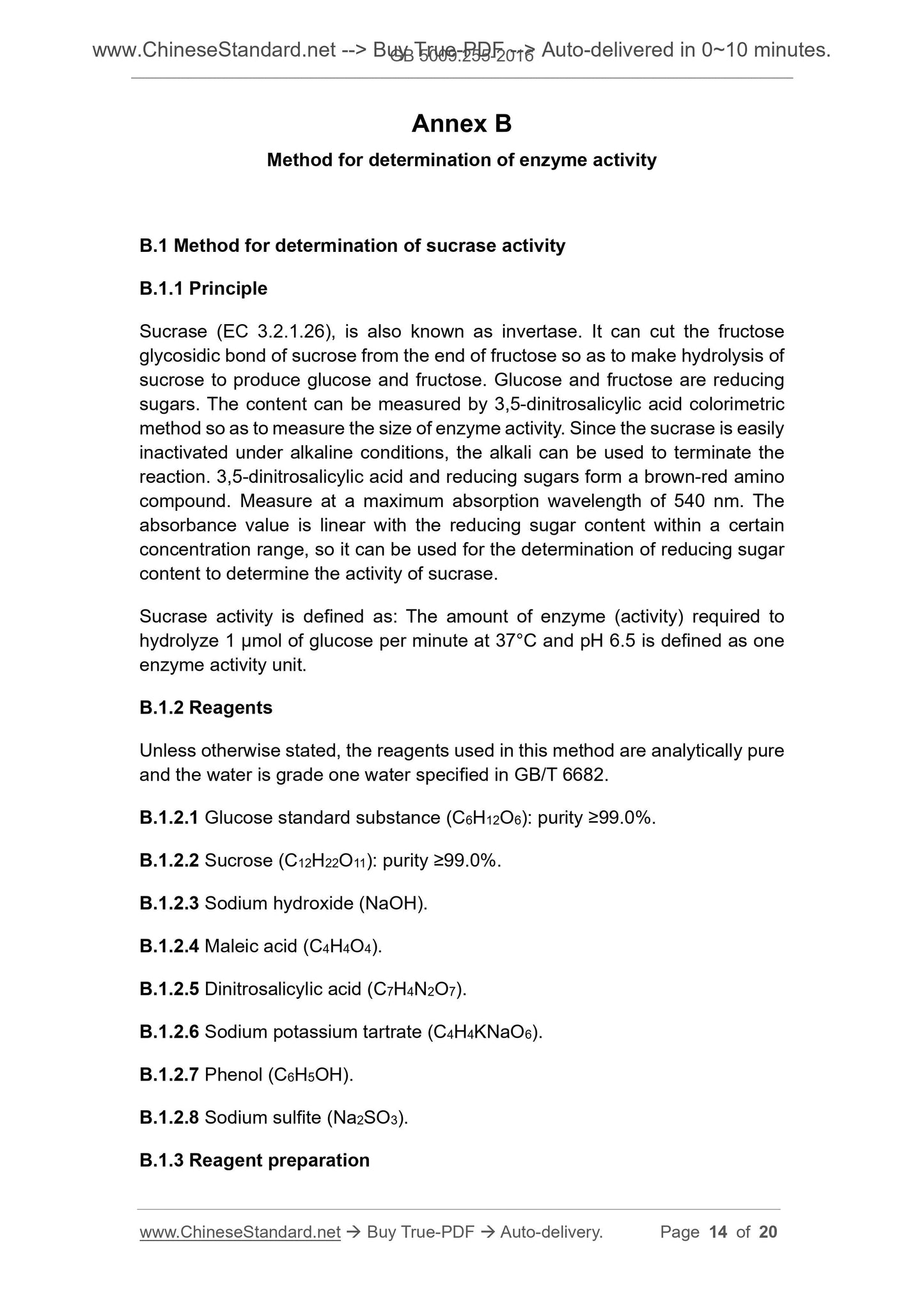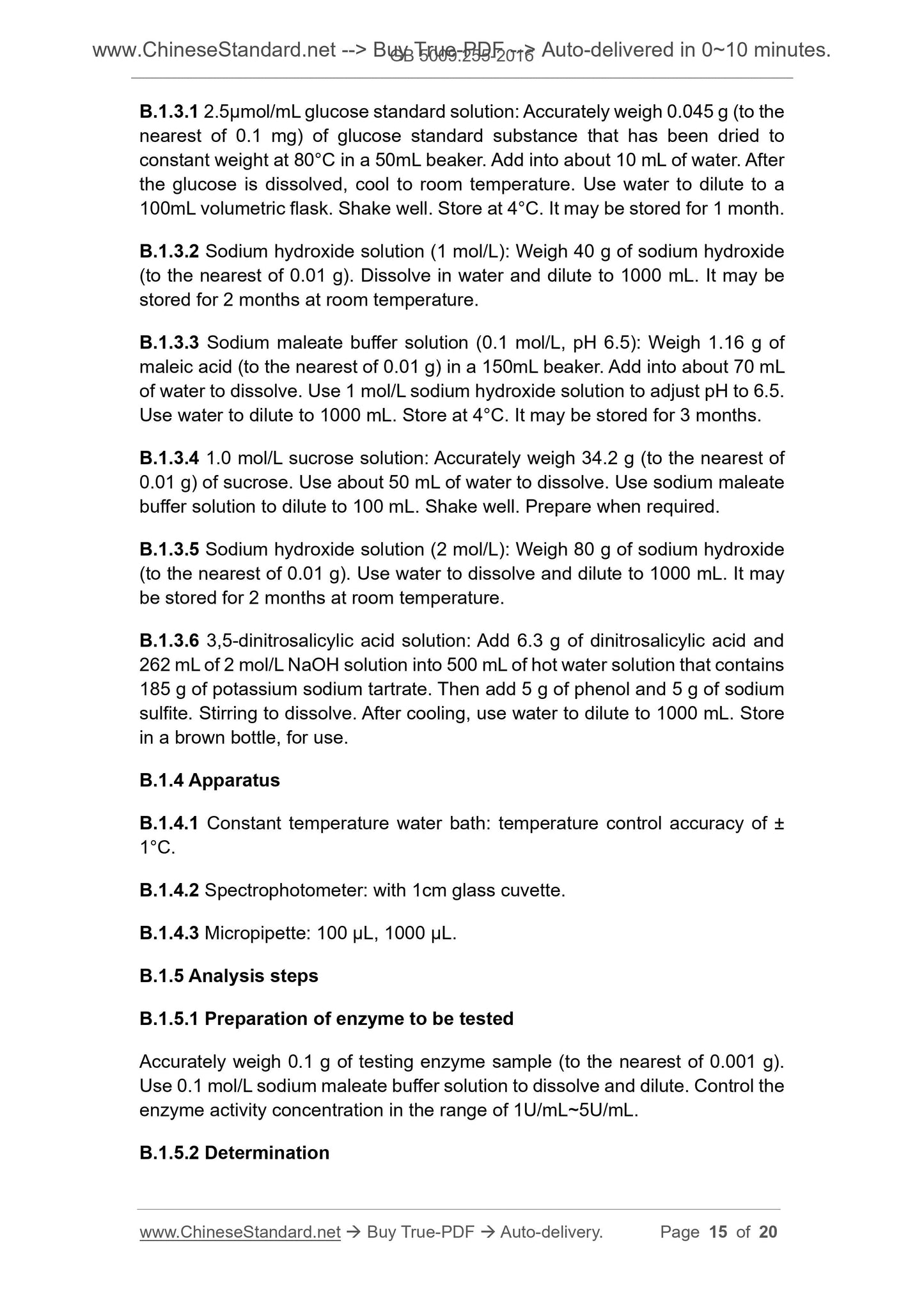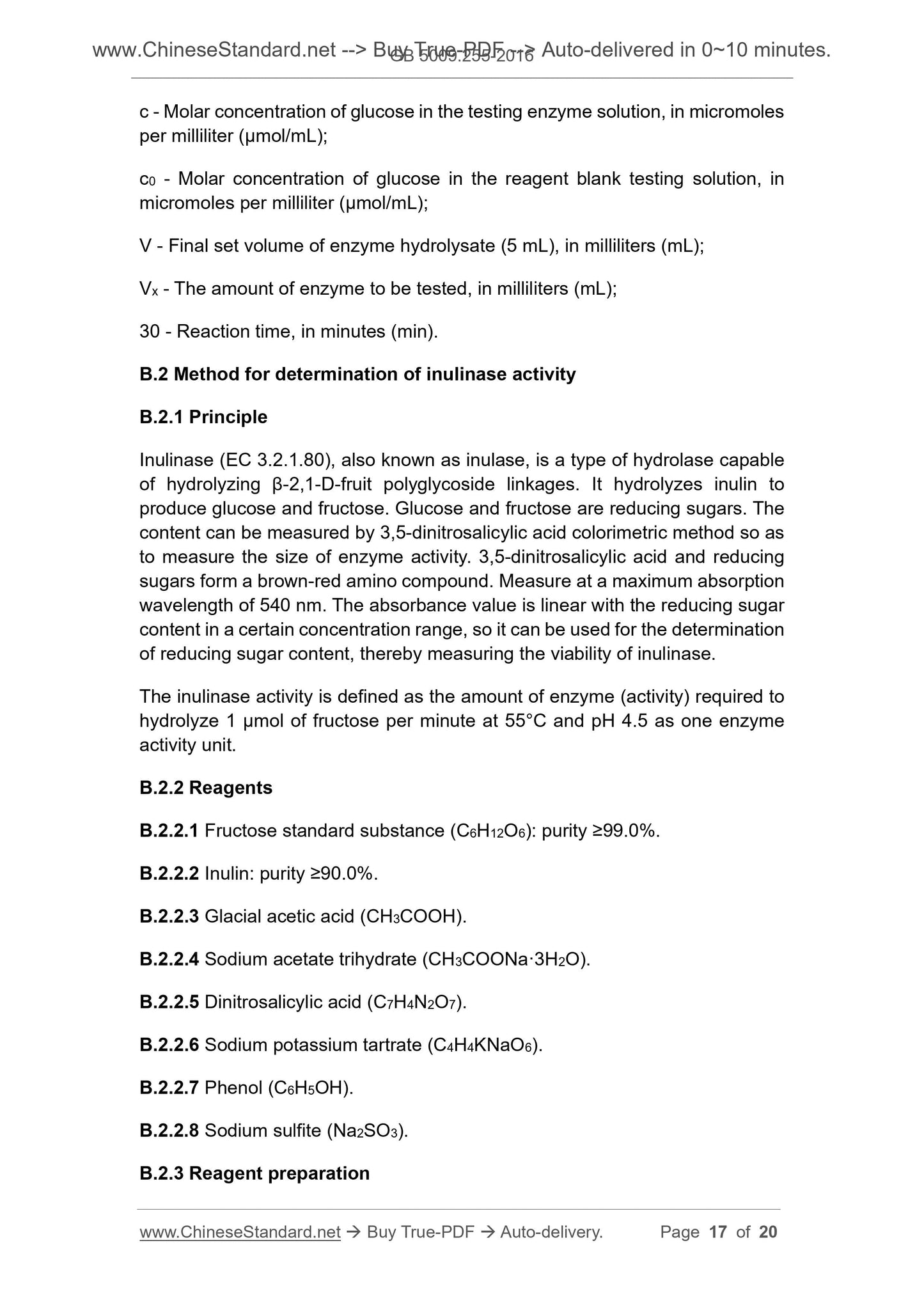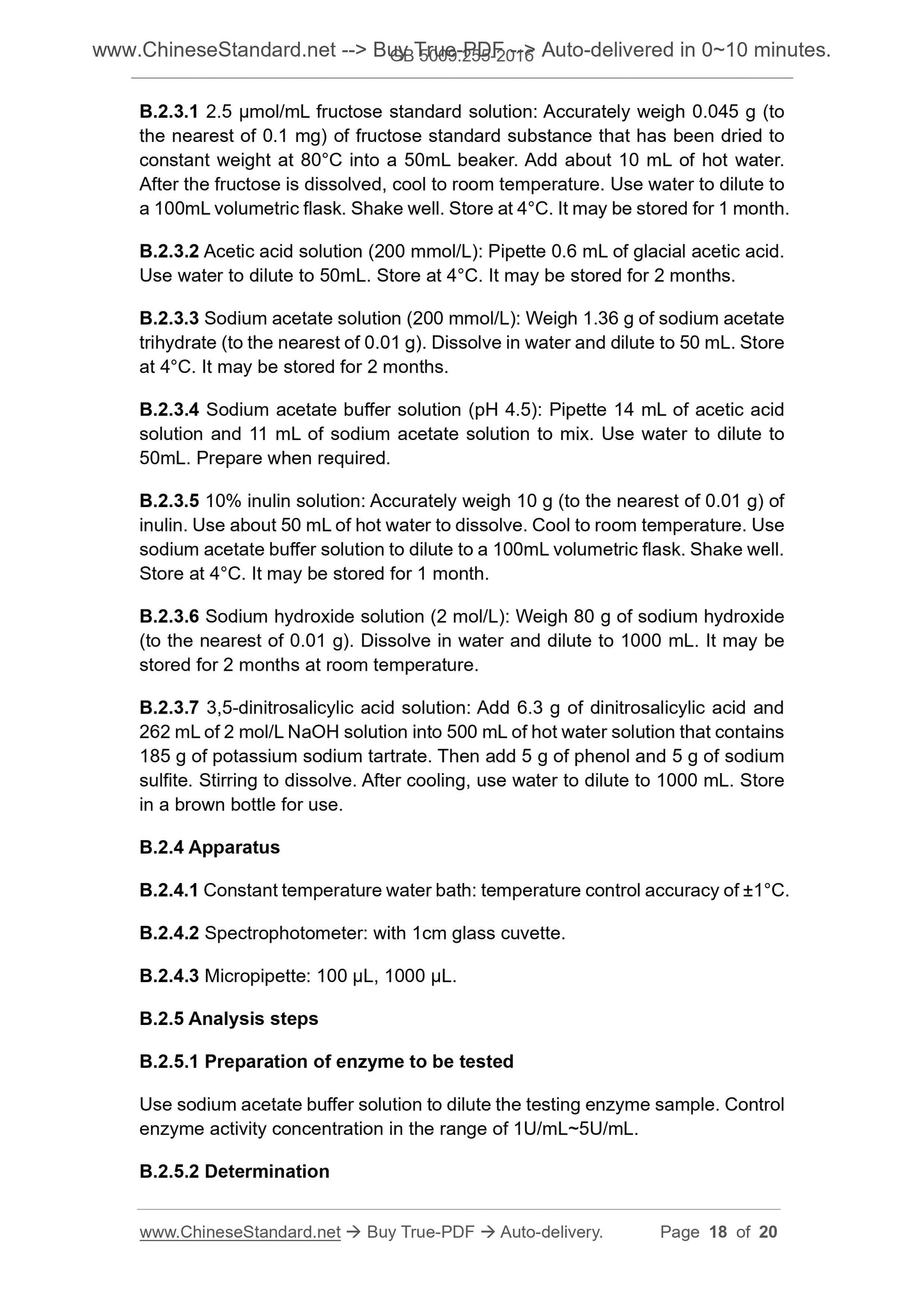1
/
of
9
www.ChineseStandard.us -- Field Test Asia Pte. Ltd.
GB 5009.255-2016 English PDF
GB 5009.255-2016 English PDF
Regular price
$85.00
Regular price
Sale price
$85.00
Unit price
/
per
Shipping calculated at checkout.
Couldn't load pickup availability
GB 5009.255-2016: National food safety standard - Determination of fructan in foods
Delivery: 9 seconds. Download (and Email) true-PDF + Invoice.Get Quotation: Click GB 5009.255-2016 (Self-service in 1-minute)
Newer / historical versions: GB 5009.255-2016
Preview True-PDF
Scope
This standard specifies the determination of fructan content in food by ionchromatography.
This standard applies to the determination of oligofructose, polyfructose or
inulin content separately added in milk and dairy products, infants and young
children's formula, infants and young children cereals, solid beverages and
formulated wines.
Basic Data
| Standard ID | GB 5009.255-2016 (GB5009.255-2016) |
| Description (Translated English) | National food safety standard - Determination of fructan in foods |
| Sector / Industry | National Standard |
| Classification of Chinese Standard | X09 |
| Word Count Estimation | 12,137 |
| Date of Issue | 2016-08-31 |
| Date of Implementation | 2017-03-01 |
| Regulation (derived from) | Announcement of the State Administration of Public Health and Family Planning 2016 No.11 |
| Issuing agency(ies) | National Health and Family Planning Commission of the People's Republic of China, State Food and Drug Administration |
Share
